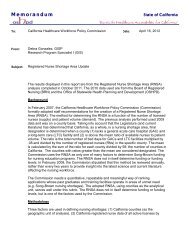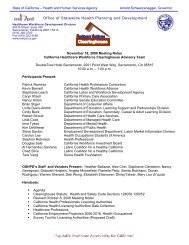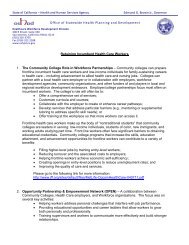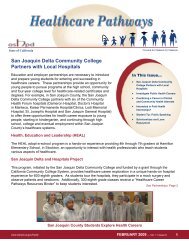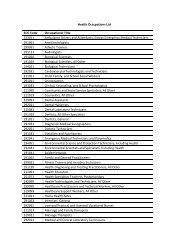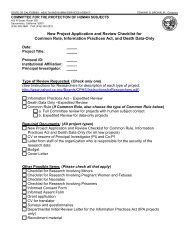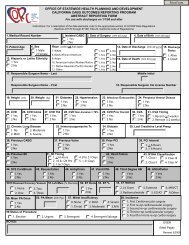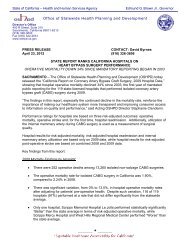Best Practices for Project Management, Design, and Construction of ...
Best Practices for Project Management, Design, and Construction of ...
Best Practices for Project Management, Design, and Construction of ...
Create successful ePaper yourself
Turn your PDF publications into a flip-book with our unique Google optimized e-Paper software.
<strong>Best</strong> Practice 7: Determine whether your project is feasible<br />
Use your management staff <strong>and</strong> consultants to determine whether what you want to do can be<br />
accomplished. The following substrategies are needed to ensure feasibility:<br />
<strong>Best</strong> Practice 7a: Determine whether there are physical limitations that will prevent<br />
achieving your intended outcome<br />
There are limits to the built environment that can make a project infeasible. Physical feasibility<br />
may also be affected by existing conditions <strong>of</strong> the target location or by adjacent conditions. In<br />
applying regulations, OSHPD can require changes that either increase cost or result in project<br />
ab<strong>and</strong>onment if physical feasibility is not properly evaluated. Accurate as-built drawings <strong>and</strong><br />
physical evaluation <strong>of</strong> existing conditions are essential in determining feasibility <strong>for</strong> remodel or<br />
addition projects. Drawings should include all disciplines (e.g., architectural, electrical,<br />
mechanical, <strong>and</strong> plumbing).<br />
<strong>Best</strong> Practice 7b: Determine the financial feasibility <strong>of</strong> the project<br />
Whether you start with a target budget or target outcome, make certain that the total project<br />
budget <strong>and</strong> the scope <strong>of</strong> the project match. Careful planning at this stage <strong>of</strong> the process is the<br />
most important determinant <strong>of</strong> project success. Inaccurate or unrealistic budgets are the most<br />
common drivers <strong>of</strong> change throughout the project duration. Any corresponding changes in the<br />
scope <strong>of</strong> the project must be addressed in the project’s budget. Distinguish between the budget<br />
<strong>and</strong> construction costs. Make sure adequate contingencies are defined to accommodate<br />
un<strong>for</strong>eseen hospital impacts.<br />
<strong>Design</strong> Phase<br />
<strong>Best</strong> Practice 8: Require that your design team <strong>of</strong> architects <strong>and</strong> engineers design to the<br />
current Cali<strong>for</strong>nia Building Code<br />
Experience has shown that there are common problems arising from design that seriously impact<br />
the satisfactory completion <strong>of</strong> the OSHPD process. These include:<br />
• <strong>Design</strong>ing to a code other than the appropriate provisions <strong>of</strong> the CBSC;<br />
• <strong>Design</strong>ing to out-<strong>of</strong>-date codes;<br />
• Using room designations or other nomenclature on plans that are not consistent with the<br />
CBSC;<br />
• Failure to make best use <strong>of</strong> PINs <strong>and</strong> CANs published by OSPHD; <strong>and</strong><br />
• Failure to follow the OSHPD Remodel CAN, which provides flow diagrams <strong>for</strong> use in<br />
planning the scope <strong>and</strong> boundaries <strong>of</strong> remodel projects.<br />
<strong>Best</strong> Practice 8a: Build in flexibility <strong>for</strong> change<br />
A foundational design goal <strong>of</strong> any hospital project should be to provide flexibility to change. With<br />
(OSHPD <strong>Best</strong> <strong>Practices</strong>) Page 95 DRAFT FINAL, Sept. 2011



